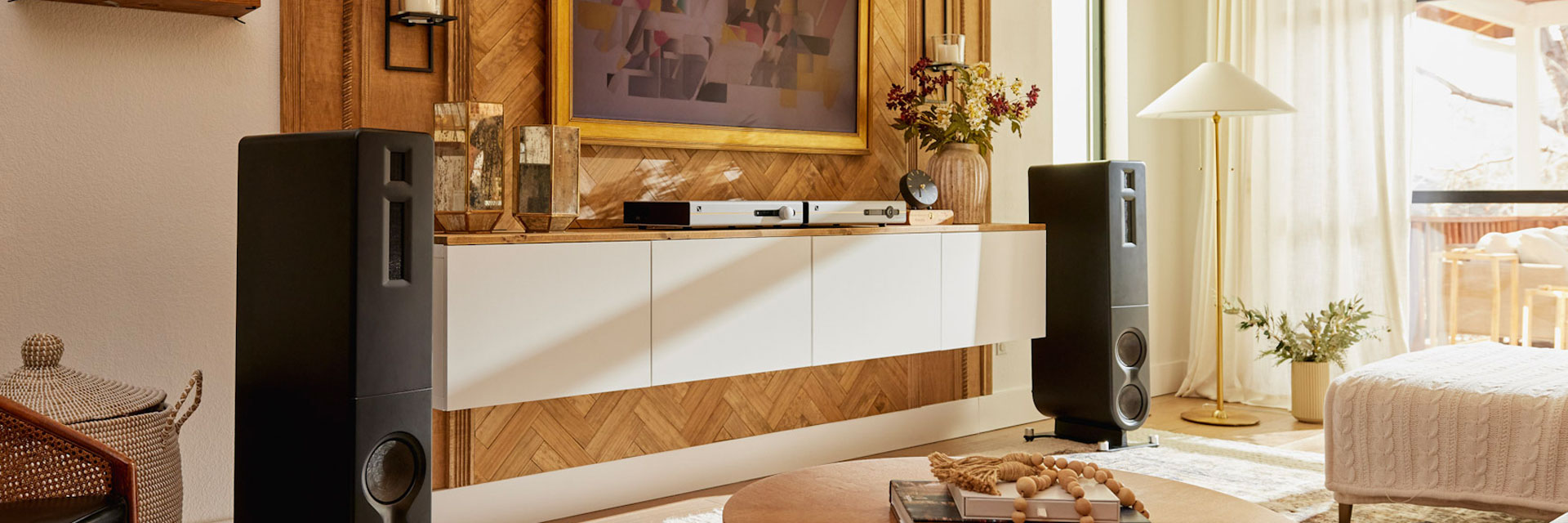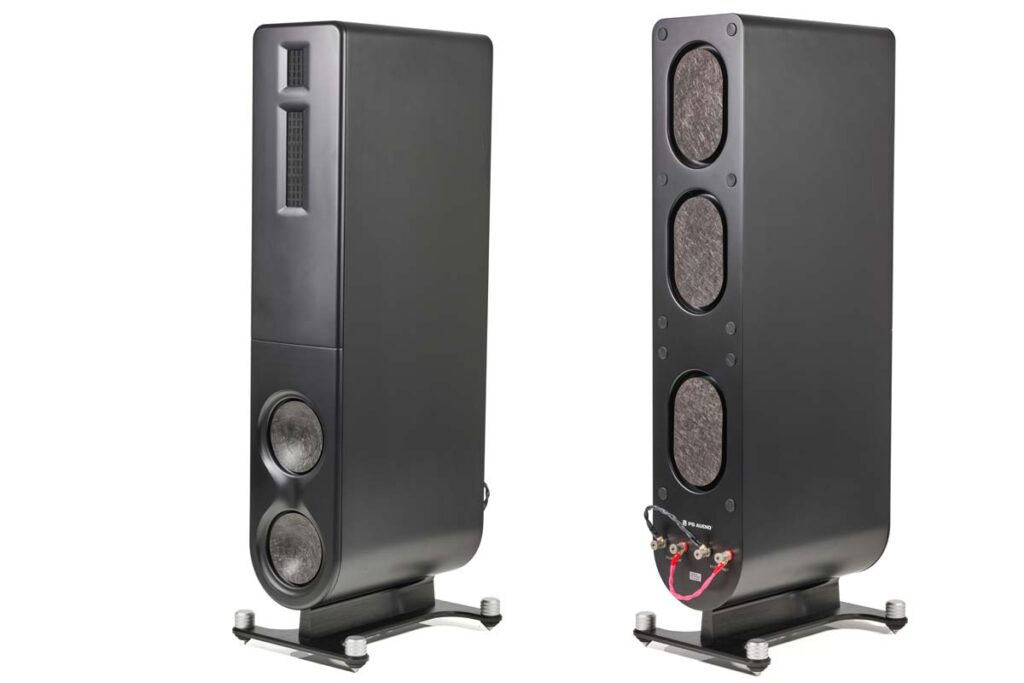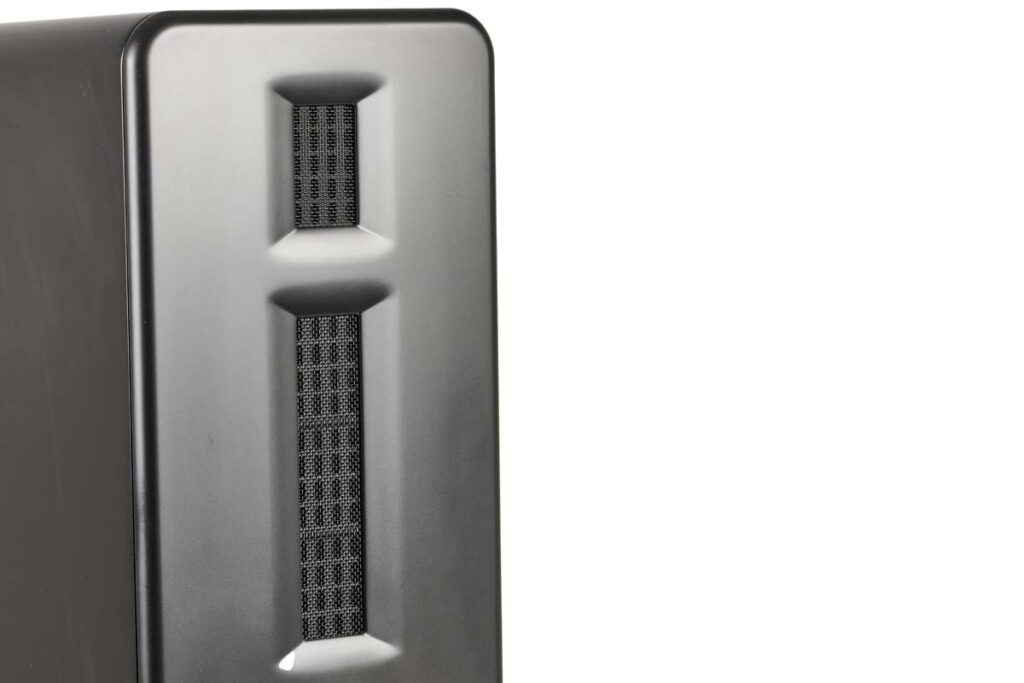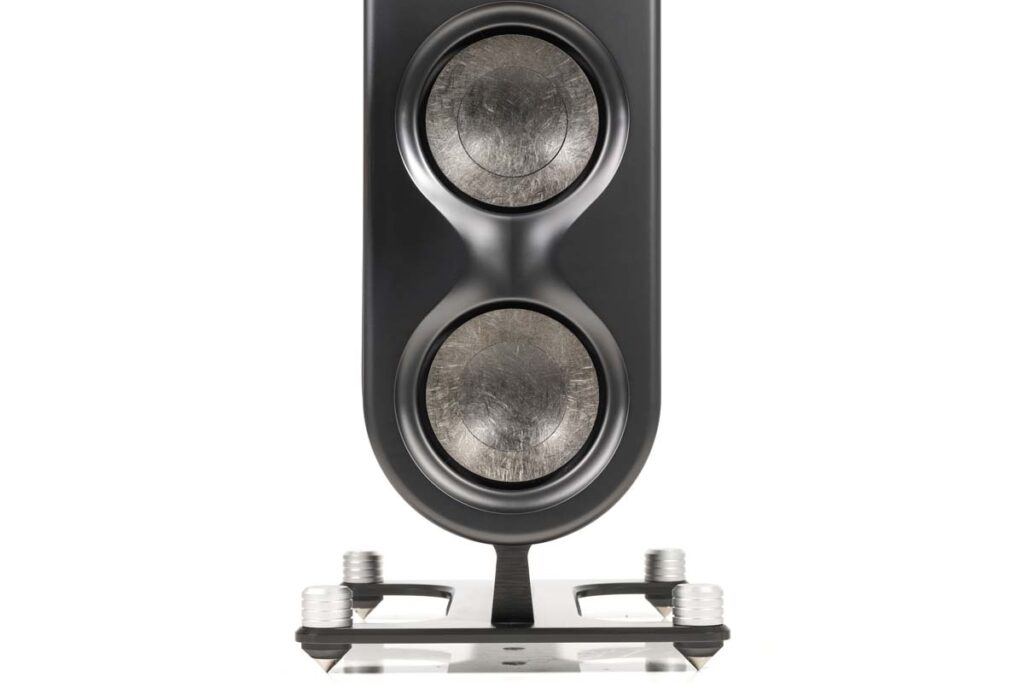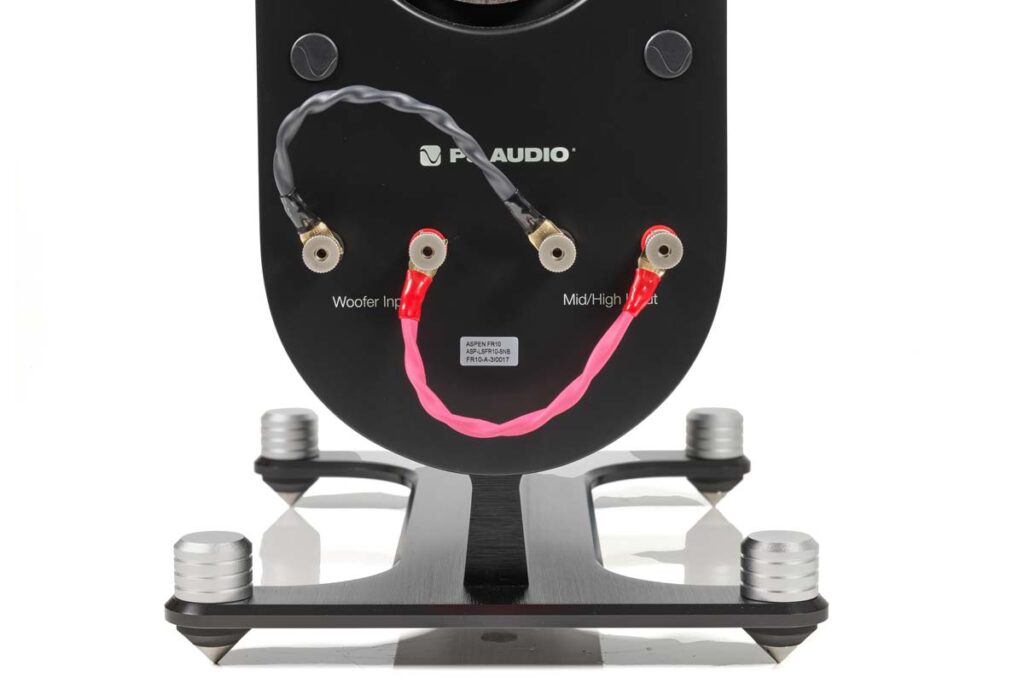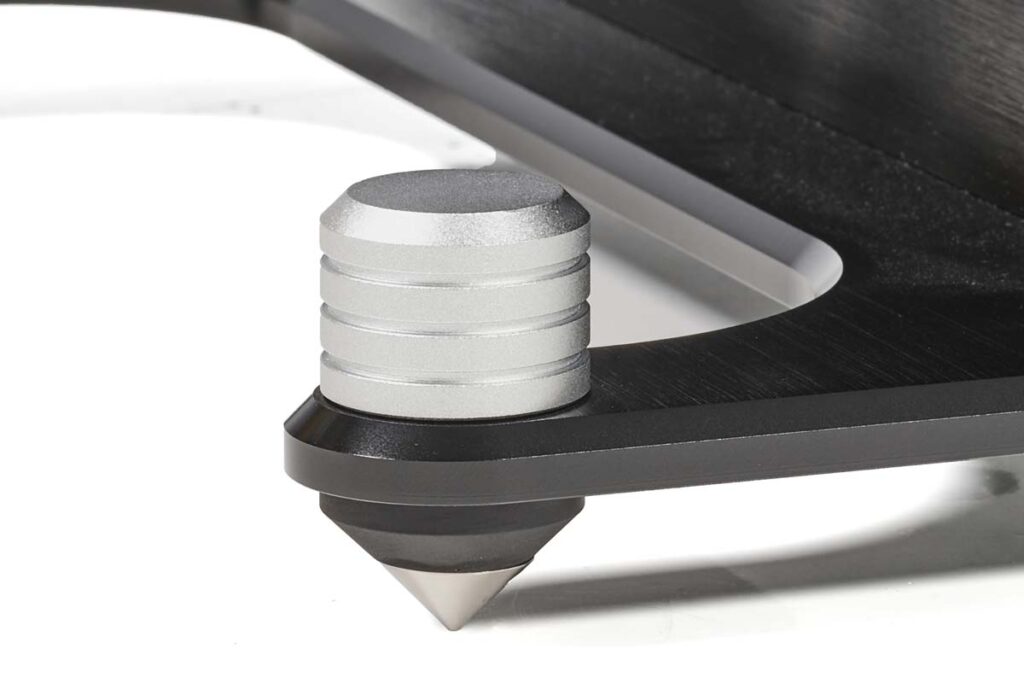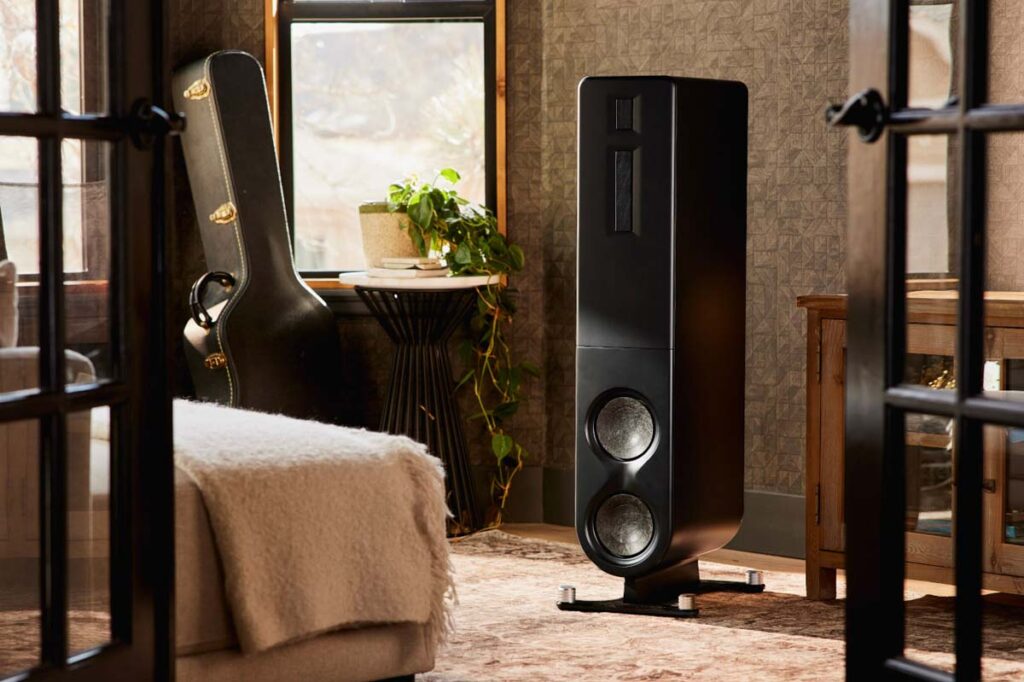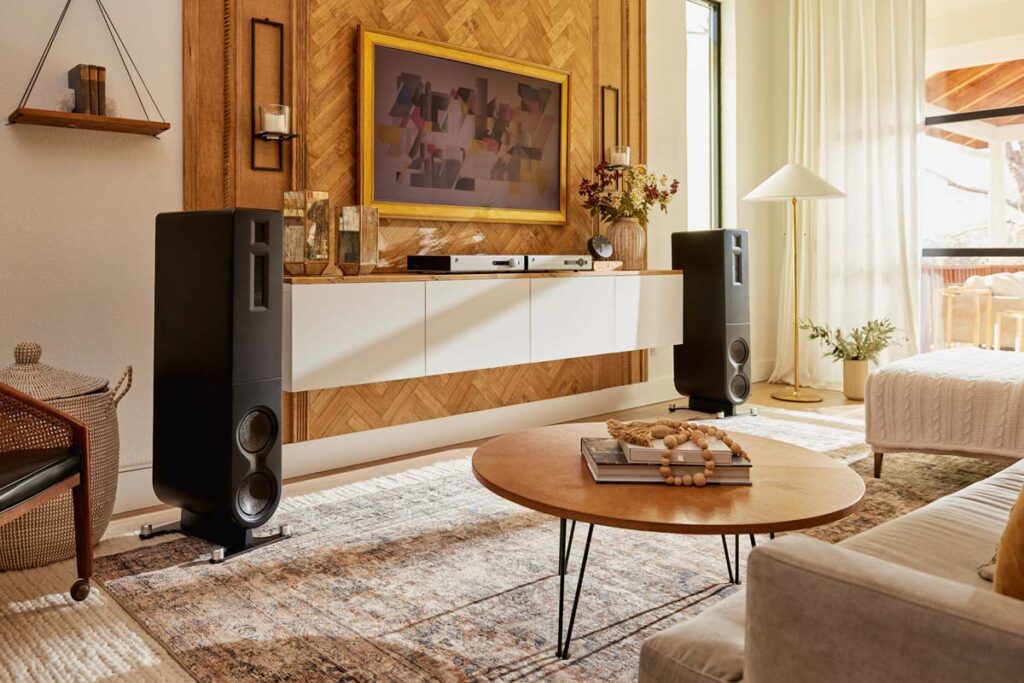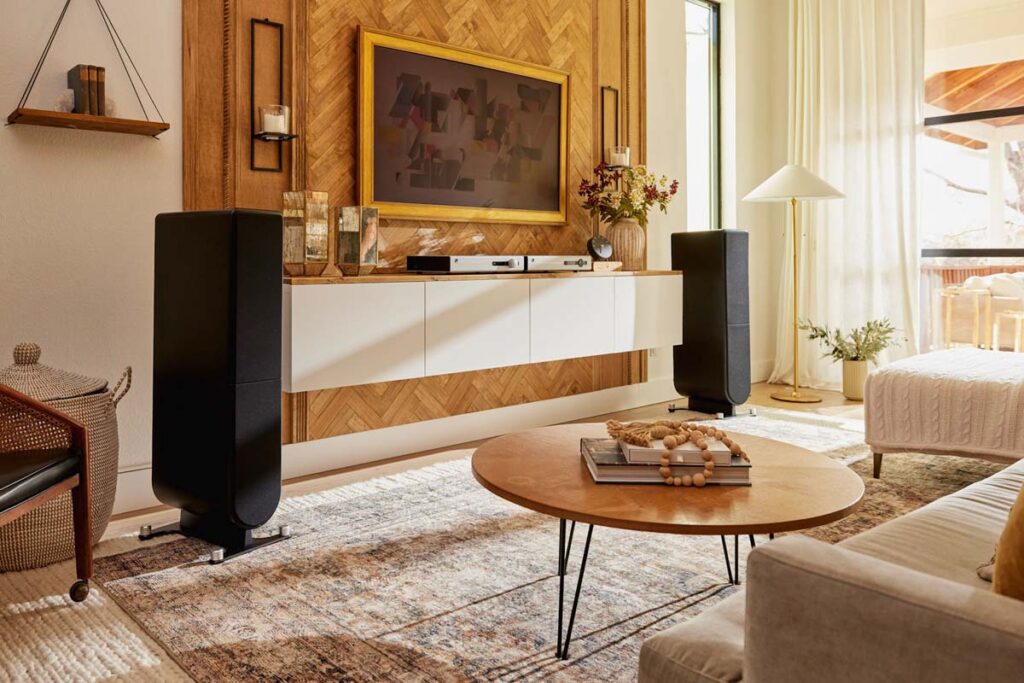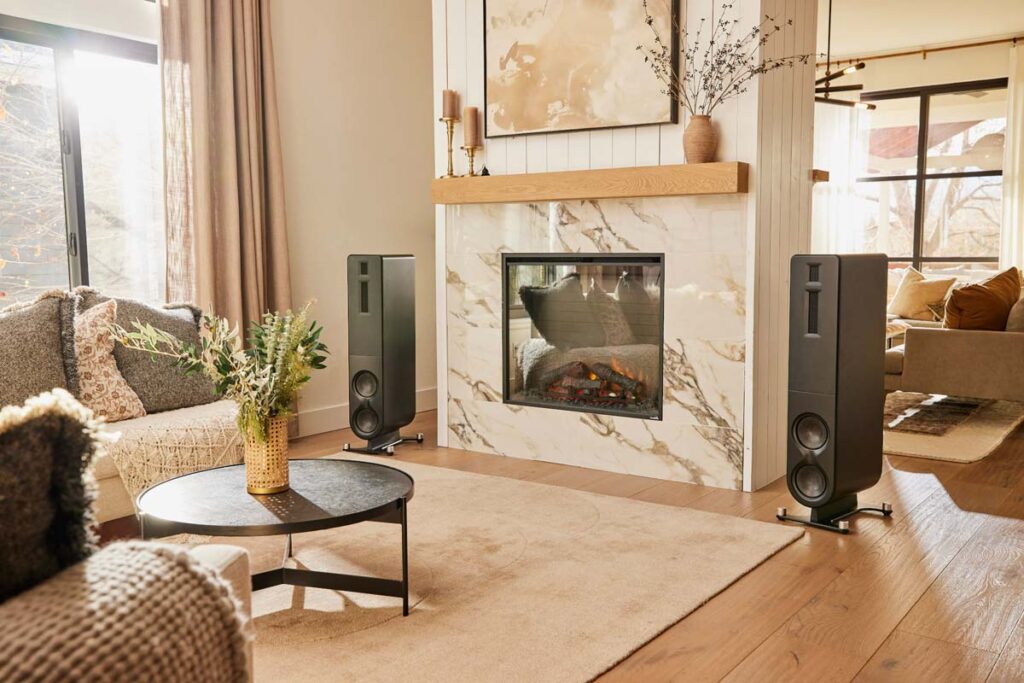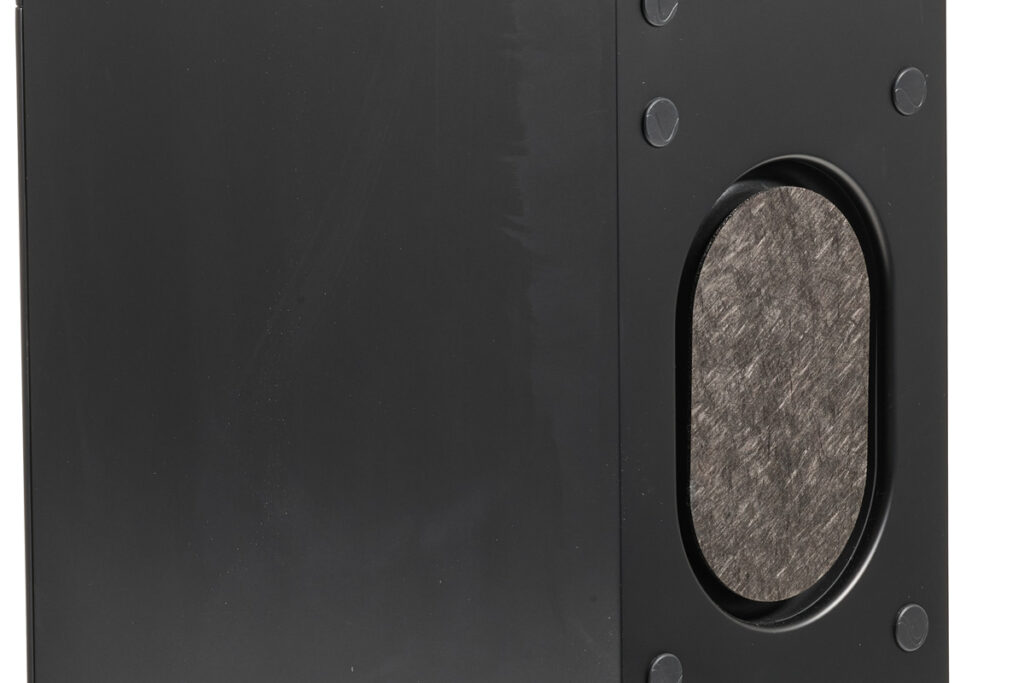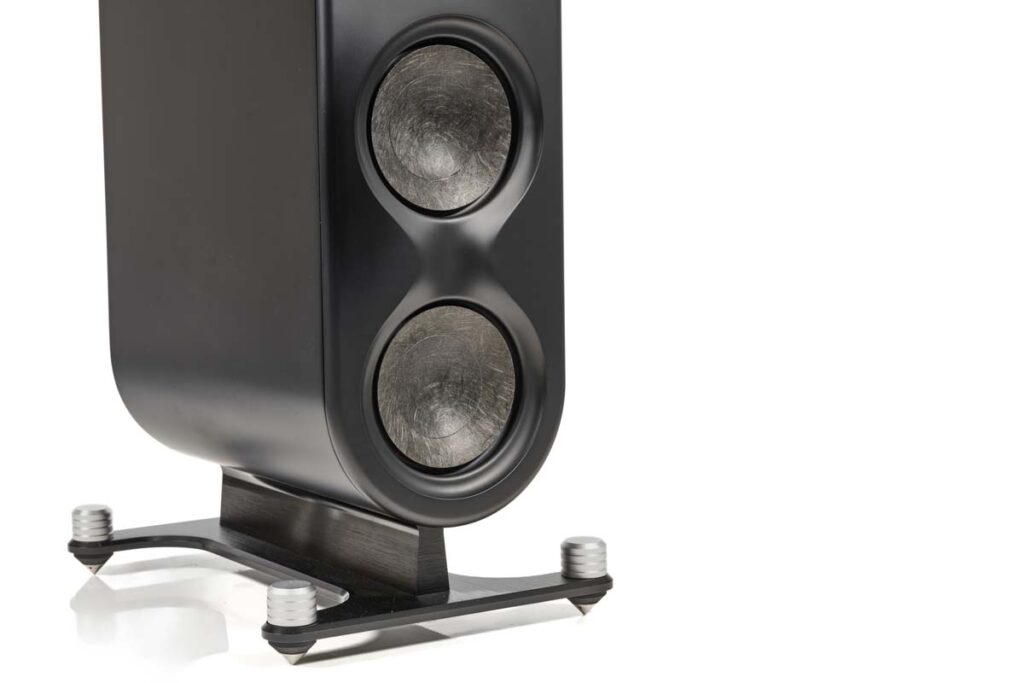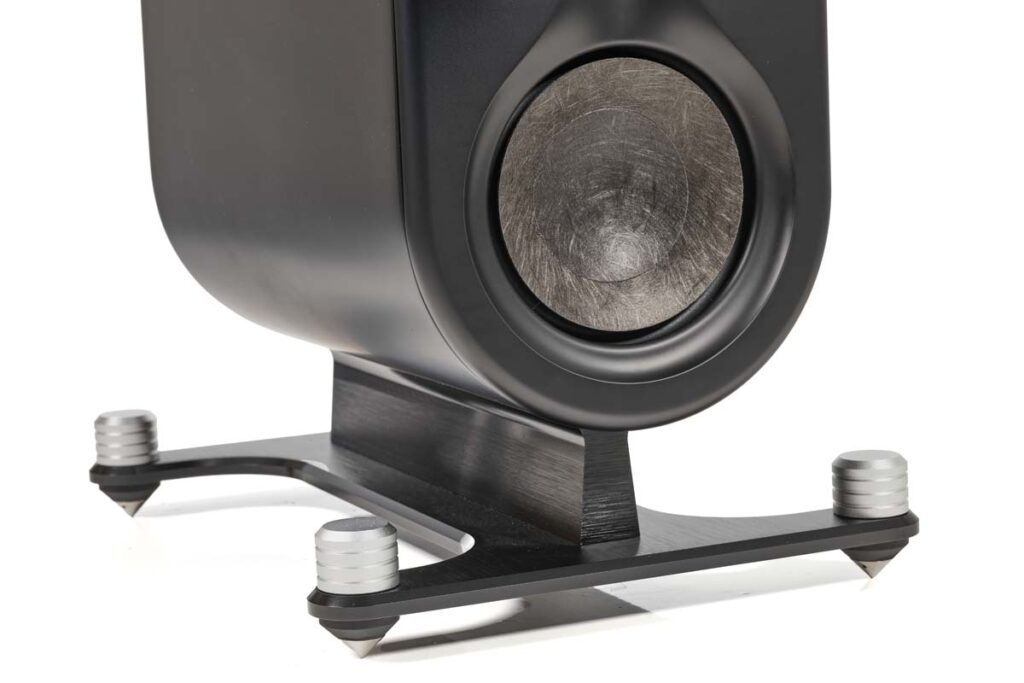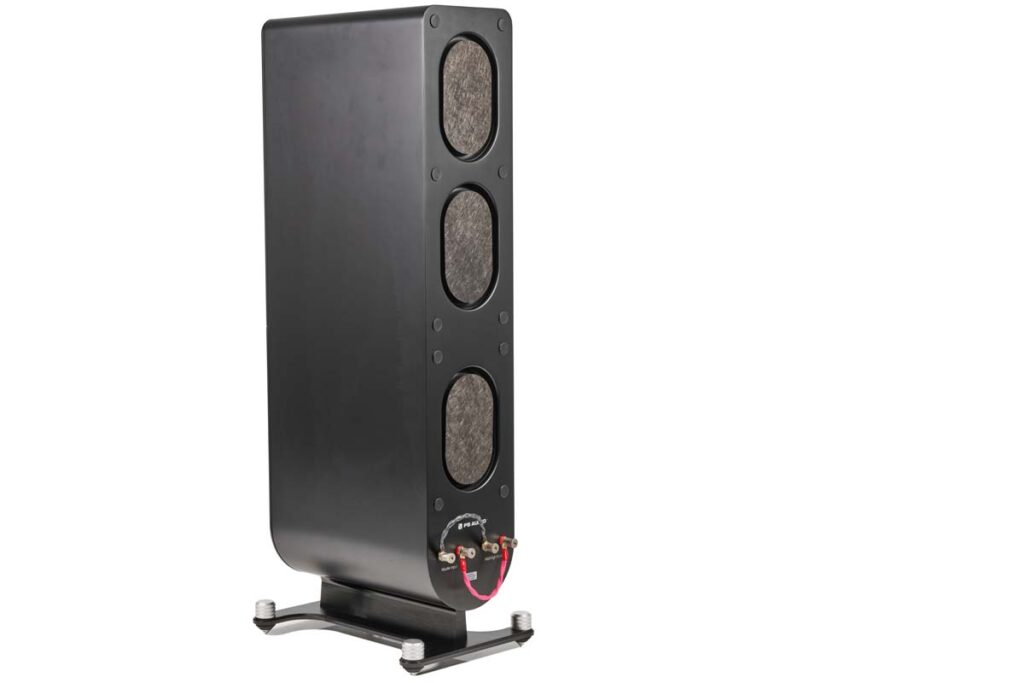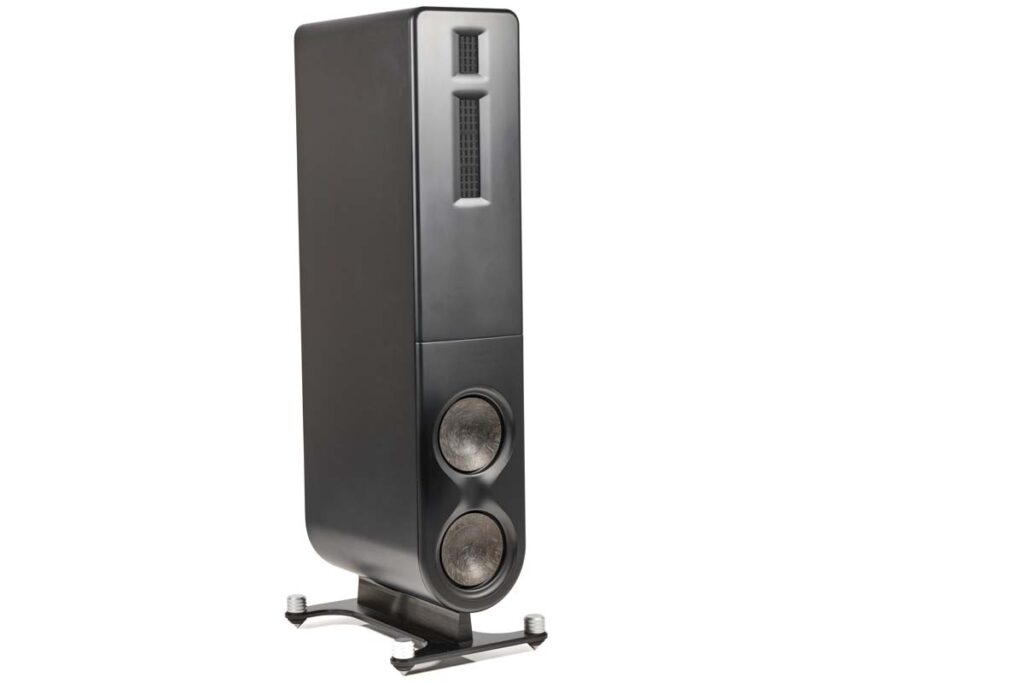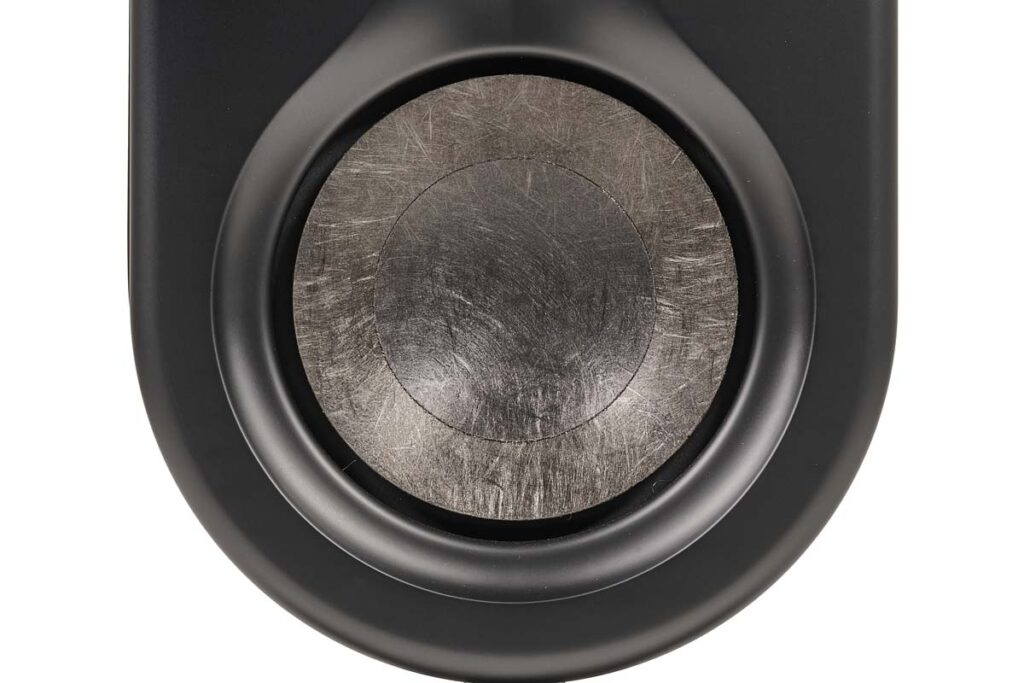When a manufacturer not only uses unusual design approaches for its very first speaker series, but goes as far as to develop all the drivers in-house, you know there’s a clear vision behind the product. We are all ears.
The Internet is an interesting medium: it can get a hypetrain rolling for a product that not only hasn’t been conceived yet, but whose developer hasn’t even joined the company yet. For years now, Paul McGowan, founder and owner of PS Audio, has been running a deliberately unprofessional YouTube channel in which he answers readers’ questions on all kinds of hi-fi topics and documents what’s going on in the hallowed halls of Boulder, Colorado, in the style of an informal company diary. As usual with PS Audio, the developers’ desks, which were often used as settings, were all about electronics. Loudspeakers were never really on the table – after all, the main listening room had always been home to the ultimate reference machine: the legendary Infinity IRS V, an almost 40-year-old quartet of towers taller than a man consisting of two line array speakers and two subwoofer towers. And at times it looked as if it would always stay that way. Nevertheless, here and there it became apparent that McGowan’s mind had been low-key circling around the idea of developing a new speaker for years: the silent guest star in some of the videos was a “mere” shoulder-high prototype speaker called “IRS Killer” in a very 90s bubbly gummy bear look – a project that could never be completed due to the death of his old friend and former Genesis colleague Arnie Nudell.
As we know today, the arrival of young developer Chris Brunhaver quickly led to this what-if cloud condensing into a concrete speaker project now known as the Aspen series. Not only has the large FR30 replaced the venerable Magnum Opus from Infinity as the reference model, it has now grown into an entire family, the FR10 being the third and smallest model to date.
Straddling heritage and independence
Even though Brunhaver’s approach is similar to Nudell’s in many respects, with the FR10, as with all Aspen models, he has gone his own way in many fundamental aspects of loudspeaker design. The most notable change is certainly the abandonment of the dipole characteristic – while the larger models at least still have a (switchable) rear Ambiance tweeter as a tribute to the old master Nudell, the new small model omits this feature. Brunhaver’s reason for this is simply the cost: even though the energy radiated from the rear can benefit spatiality, the FR10 was all about salvaging as much as possible of the technological quality and sonic performance of the FR30 at a much more affordable price point – and other things simply had higher priority here, such as higher-quality crossover components or the baffle made of a heat-cured, glass fiber-reinforced synthetic resin, which is braced to the rear panel with screws running along the entire length of the cabinet.
In contrast, Brunhaver’s preference for planar drivers in the midrange and treble is entirely in keeping with his indirect predecessor; but while the Infinity and Genesis models used ribbons, the young developer relies on planar magnetics, which he sees as having a whole range of advantages over dynamic drivers: In addition to the unavoidable break-up of the diaphragm towards high frequencies in cone and dome drivers, Brunhaver sees one of the main problems of dynamic drivers in distortion caused by eddy currents in the drive unit. The drive unit of a planar magnetic driver has almost no inductance due to its operating principle and thus elegantly avoids this problem. Due to the extremely low moving mass, inertia-induced hysteresis of the reciprocating assembly is also not a problem with planar drivers. Equally thanks to the low mass, planars exhibit much cleaner spectral decay compared to dynamic drivers: In relation to their surface area, their diaphragm is so light that the air surrounding them behaves almost like a liquid that dampens the diaphragm vibration from the outside – as a result, the diaphragm stops practically instantly as soon as the signal breaks off. As for the drawbacks – limited dynamic reserves and bottom-end authority -, Brunhaver seems to have found quite convincing answers, to: He has managed to get a 96 dB sensitivity out of the midrange driver – in the FR10 it is therefore padded down by almost 10 decibels, as the speaker itself sits at a moderate 86.5 decibels. The midrange therefore plays with minimal excursion, which should definitely help distortion-free dynamics. A steep fourth-order crossover also relieves the planar magnetic at the lower end of its frequency range, again sparing it a considerable amount of excursion.
Speaking of the low end: This is where Brunhaver puts his very own design signature on the FR10. As one of relatively few developers, he is a staunch advocate of passive radiators. Their advantages are obvious: in principle, they work in the same way as bass reflex systems, but without pumping noises or resonances in the reflex port and with the additional benefit that passive radiators do not take up any volume in the cabinet. In addition to the higher costs, however, they also bring with them another, often overlooked problem: as a mass-spring system, their tuning frequency is set via the mass of the cone and the volume of the cabinet – at the same time, however, the cone in its elastic suspension also has its own resonance frequency, which is usually not aligned with the tuning of the loudspeaker itself and thus causes uncontrolled boosts and cancellations. Brunhaver solves this problem by suspending the passive cones particularly softly. As a result, their natural frequency moves into a range below the bandwidth of the loudspeaker and therefore cannot cause any significant problems. In our case, below the bandwidth means below 30 Hertz – a very respectable value considering the very moderate dimensions …
Big fun in small rooms
… However, my first surprise came during the first listening tests: In our admittedly generously sized listening room of around 55 square meters, the small Aspen floorstanding speakers initially struggle to fill the room with bass energy. One of my mistakes turned out to be that I had initially set them up a good way away from the wall. In fact, the bass tuning of the FR10 assumes a relatively close-to-the-wall placement – after all, as the smallest member of its series, it is also designed for small to medium-sized rooms. So if you want to fill an opulent living room with sound, you should refer to the larger models. I decide make a virtue out of the necessity of a too large listening room and approach the near-field ideal by having the Aspen radiate across the room and also choosing a significantly shorter distance from the wall for more boundary reinforcement.
They immediately feel much more comfortable in this position: with Wadaiko Matsuriza’s “Otoko Koko ni Ariki” (Wadaiko Matsuriza: Japanese Drums), the thunderstorm of drums now rolls through the room with proper weight. There is always enough information in the vibration of the drumheads to easily identify the positions of the individual drums. Despite the short distance from the wall, the FR10s place the occasional “battle cries” of the drummer well beyond the wall, so that he is virtually roaring into the room from the garden.
Even though the pure percussive dynamics are a lot of fun, I soon find myself looking for something more melodic. In Emerson, Lake and Palmer’s “Fanfare For The Common Man” (Works Volume 1), the stage projection also clearly extends beyond the boundaries of the room – the individual players are not overly sharply outlined, but appear cleanly positioned in the room. Tonally, the FR10 consistently refrains from any acrimony. With a minimal tendency towards politeness, the two planar diaphragms in the mid and high frequencies accurately reproduce the action without ever grating away on the listener’s ears. Of course, this tuning is not uncompromisingly neutral – but it is all the more suitable for everyday use, even and especially when the recording is a little rougher. “Bird On A Wire” by the Bush Tetras (They Live In My Head), for example, is not a track to listen to quietly – but the guitar howling through the action with plenty of feedback echo can be a little tiring at times. The FR10 transmits the wild energy to my nerve center without making my ears bleed.
Speaking of listening levels: One characteristic that I noticed again and again in my listening sessions is that the FR10 does indeed like it a little louder – at whisper-quiet levels, the slight restraint in the midrange and treble can sometimes seem a little too tame. With this tuning, it suits listeners who want to rock out in rooms that are not too large, where the short reflection paths tend to create an unpleasantly dense noise, especially at higher frequencies. Due to its rather modest efficiency, it wants to be supplied with plenty of power – it doesn’t have to be an opulent mono monster, but 100 watts per channel or more is a good idea. This “louder is better” characteristic in no way means that jazz doesn’t also work excellently: “Early Summer” by Ryo Fukui from his first studio album Scenery, for example, is in itself a rather quiet piece whose piano chords, played with clearly modulated dynamics, nevertheless throw a lot of energy into the room at certain points. Crank he volume up to what you’d expect to hear in a jazz club – and the finely controlled power of the piano will tickle your leg-rocking reflex while the overtone sheen of the brass section in the drums will also unfold in all its glory. The sound is always so cleanly organized that I can hear with rare clarity not only where, but also at what angle the piano is positioned on the stage.
It’s clear that the FR10 doesn’t want to cater to all types of listeners, but it can cope perfectly with all genres. The PS Audio Aspen FR10 can be a real blessing for all those whose rooms would actually rather call for standmount speakers, but who still appreciate and crave the depth and dynamic reserves of floorstanding speakers, regardless of their musical taste.
Accompanying Equipment
CD players: Accuphase DP-570, Audio Note CD 3.1x, Esoteric K-05XD | Network players/streamers: Lumin P1, Aavik SD-880, Auralic Aries G2.2 | D/A converter: Benchmark DAC 3B | Preamplifiers: Accuphase C-2300, Electrocompaniet EC 4. 8 Mk II | Power amplifiers: Accuphase P-7500, Burmester 216, Electrocompaniet AW-800 | Speakers: Nubert nuZeo 15, Manger c1, Wilson Audio Sasha DAW | Cables: WestminsterLab, AudioQuest, Atlas Cables | Racks: Finite Elemente, Creaktiv
Loudspeaker PS Audio Aspen FR10
Concept: passive floorstanding loudspeaker with planar magnetic midrange and tweeter and passive radiators | Equipment: 1 x 2.5“ planar magnetic tweeter, 1 x 8” planar magnetic midrange, 2 x 6.5“ woofers, 3 x 6 x 9” passive radiators | Crossover points: 550 Hz, 1750 Hz | Sensitivity (2.83 V/1 m): 86.5 dB | Nominal impedance: 4 Ω | Recommended amplifier power: 50 to 200 W | Frequency response (-6 dB): 32 Hz to 20 kHz | Special features: Baffle made of heat-cured and glass fiber-reinforced synthetic resin braced to the rear panel with continuous screws, woofer and passive radiators with sandwich cone made of non-woven carbon fiber and PMI foam | Finishes: Matt white, matt black | Dimensions (W/H/D): 30/105/41 cm (incl. stand) | Weight: 34 kg | Warranty period: 2 years (5 after registration) | Price per pair: around € 13,000
HiFi 2 die 4
Austraße 9
73575 Leinzell
Phone +49 7175 909032 and +49 179 2991449
hifi2die4@gmx.de

